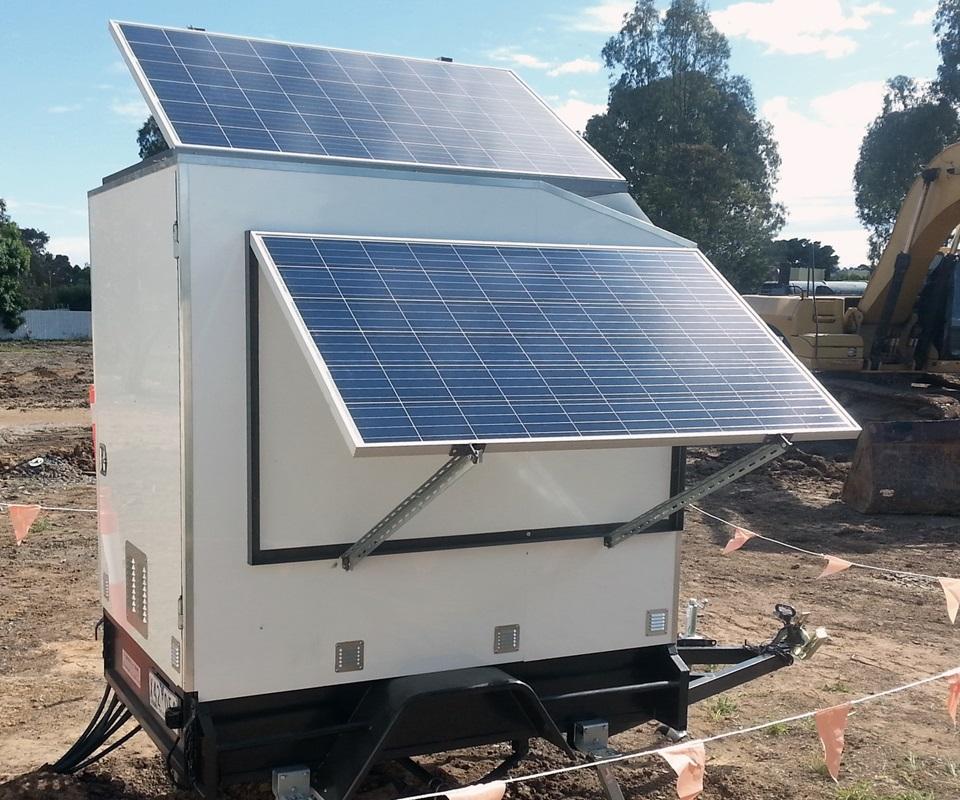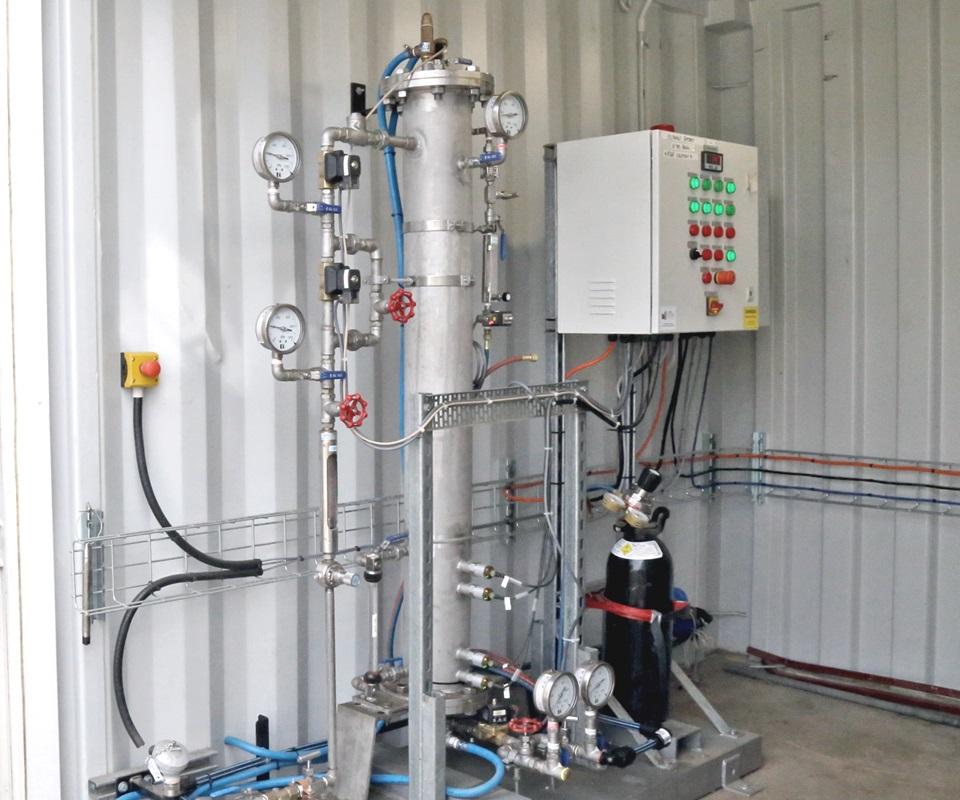Super-oxygenated Water: Your Sustainable 'Drink' of Choice for Groundwater Remediation
Golder-WSP USA innovation provides cost-effective, natural approach to clean up groundwater aquifer contamination, reduces risks to human health and the environment.
Chemical-free super-oxygenated water that is affordable and sustainable … it sounds like a health or sports drink marketing dream. But this isn’t bottled for human consumption. Instead, super-oxygenated water is a bioremediation solution to clean up contaminated groundwater and impacted soil, and it comes with its own set of compelling selling points.
Super-oxygenated water (SOW) has significant advantages over other methods that have been used for groundwater remediation at sites contaminated with petroleum hydrocarbons – such as former fuel storage facilities. For industries such as oil, gas and transport, this offers a cost-effective, natural approach to clean up hydrocarbon contamination in groundwater aquifers and reduce risks to human health and the environment.
Originally developed by a remediation team in Montreal at Golder Associates, which is now integrated with WSP as one company, the SOW approach has been used by Golder since 2004 in Canada, and more recently has been further enhanced and used successfully for projects in Australia, the United States, South America and Europe.
Building on the successes with remediating hydrocarbons in the oil and gas sector, SOW is now being applied to other contaminants and is being embraced by other sectors. It offers a solution for each sector in which the residual presence of petroleum hydrocarbons presents challenges (such as manufacturing, mining and government).
What Is SOW and How Does It Work in Bioremediation?
When described in technical terms, the process may sound complex – but, really, it’s a simple, elegant enhancement to a natural environmental process. No added ingredients, just oxygen and nutrients. No nasties, just enhancing naturally occurring microbes.
Bioremediation is a proven approach by which oxygen stimulates microorganisms to break down organic contaminants into simple, safe end products. However, in an area of contaminated groundwater (a petroleum hydrocarbon plume), the geochemistry of the groundwater is mostly without oxygen (anaerobic) because the available oxygen has been consumed by microbes in the process of metabolizing the undesirable organic compounds into carbon dioxide, methane, water, inorganic salts and cell matter – a process known as biodegradation.
To enhance biodegradation and speed up the metabolism of organic compounds, more oxygen is needed. SOW is injected into the groundwater aquifer via injection wells, creating a zone of high concentrations of dissolved oxygen – giving the bugs more oomph to do their thing.
High-purity oxygen is dissolved into potable water or extracted groundwater within either a pressurized aeration tower or pressurized chamber (venturi process). Both methods are very effective, as more than 90 percent of the oxygen injected (as SOW) is transferred into the groundwater aquifer. The method can produce oxygen concentrations of up to 40–50 mg/L, which is five to six times the natural dissolved oxygen concentration of groundwater.
Is it too good to be true? Not at all – but as with any technology, SOW does have some limitations. For example, SOW may be of limited use in low-permeability or shallow aquifers, so a good conceptual site model is required to understand these limitations and uncertainties.
The Advantages of SOW
The SOW technique has been found to deliver oxygen to impacted areas at a cost below that of other common delivery techniques, such as biosparging, oxygen release compounds, oxygen diffusion, pure oxygen injection or ozone. The technique works on mid-range hydrocarbons such as diesel fuel and heating oil, on lighter hydrocarbons such as gasoline, and other contaminants such as heavy metals (via precipitation) and ammonia (via denitrification).
Since the oxygen is dissolved into the water prior to being injected into the aquifer, the generation of vapor due to oxygen degassing during the injection process is negligible. This is particularly important when trying to remediate close to sensitive receptors such as residential dwellings.
The small footprint of the equipment used for SOW injection means it can be housed in a 6-by-4 foot (1.8-by-1.2 meter) trailer or tucked away into the corner of an operating facility. The equipment can be connected to the municipal water supply, and the noise emitted is negligible. The advantages are further enhanced with the inclusion of a small solar array and deep-cycle gel batteries as a power source, which means CO2 emissions from the system are insignificant.
In many jurisdictions, getting regulatory approval to use SOW is more straightforward than for other remediation methods, because it just involves injecting water – from the municipal water supply, or groundwater – and oxygen. The system could also be installed in a closed loop configuration where downstream wells are used to recirculate the oxygenated water within the treatment zone, creating an in-situ bioreactors. This usually means a greater acceptance from key stakeholders, quicker application processing and approval time, and ultimately enables an earlier start to remediation.
Next Steps for SOW
The SOW process can be used to inject any compressed gas. For instance, it has been used in Québec, Canada to inject propane for halogenated contaminants treatment by co-metabolism mechanisms. It has also been successfully used to inject hydrogen gas to enhance reduction of trichloroethylene and support ammonia denitrification.
So far, SOW has been successful in the fractured basalt formations common in the area around Melbourne, Australia, where it has been applied to more than seven sites since 2016. The SOW technique is widely being recognized as a reliable and efficient technology and is continuing to develop worldwide, including extending into further situations where the delivery of dissolved gases in water can become an effective remediation solution. For instance, a similar approach has been successfully implemented in which pressure aeration towers are filled with propane to bioremediate 1,4 dioxane via co-metabolism.
With ever-increasing competition and pressure on global water resources, the need to attend to groundwater contamination is urgent. This simple injection of life-giving oxygen could be just the tonic we need for healthier future ecosystems and populations. No plastic bottle required.
Editor’s note: The SOW process was developed in 2004 by Golder’s remediation team in Montreal, Canada (Eric Bergeron, Sylvain Hains, Christian Gosselin and J-P Davit). In 2009, Golder won a Brownie Award from the Canadian Urban Institute in the category “Sustainable Remediation Technologies and Technological Innovation” for its application of SOW.
About the Author
Andrew Sullivan is a principal environmental engineer and chartered professional engineer at Golder based in Brisbane, Australia. He has over 15 years' environmental consulting experience and works mainly within the oil and gas, manufacturing and governmental sectors. Sullivan specializes in groundwater remediation system design, construction, operation and maintenance with a particular interest in the use of bioremediation techniques to solve environmental problems.




